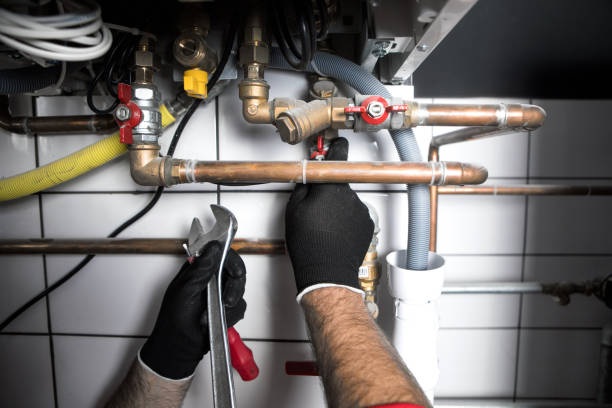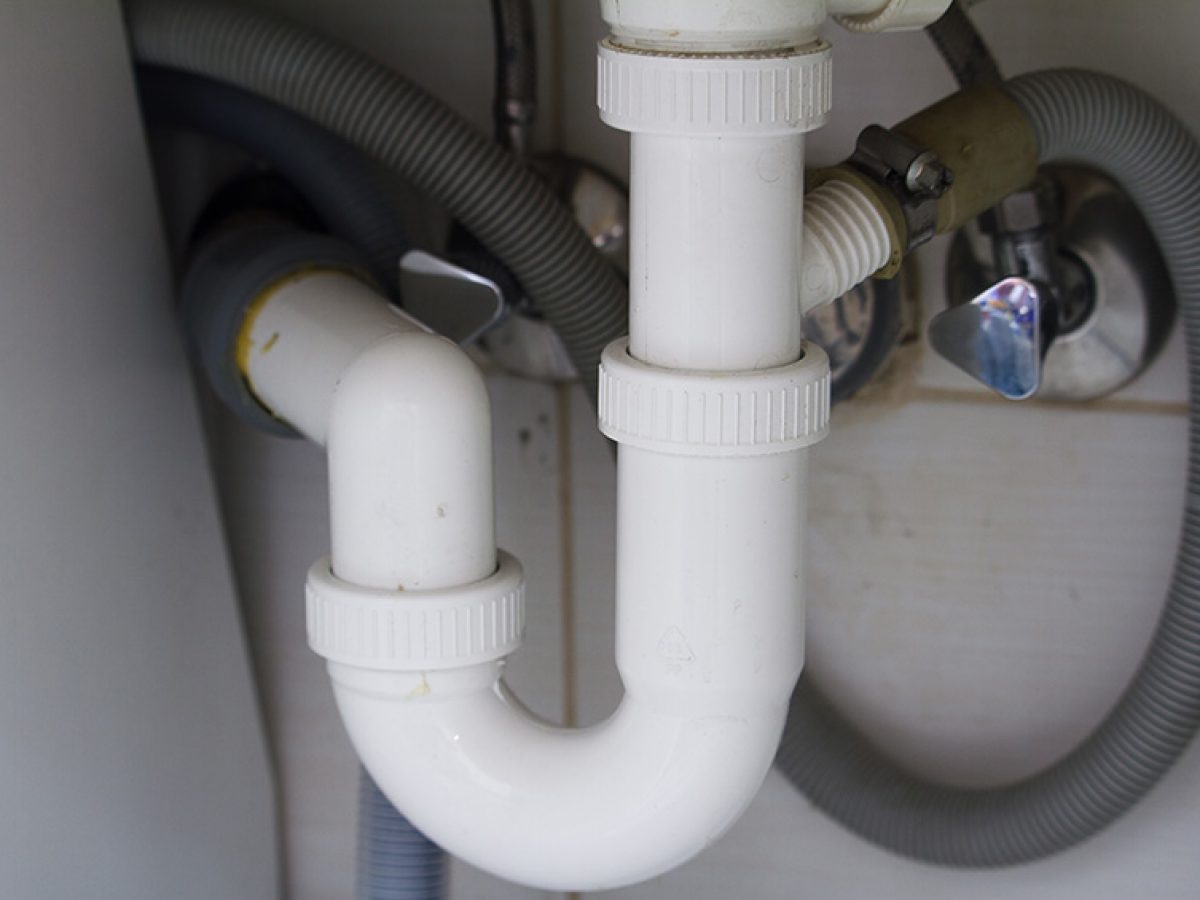Structure of Your Home's Plumbing System: Why It Matters
Structure of Your Home's Plumbing System: Why It Matters
Blog Article
We have encountered this great article relating to Plumbing Installation 101: All You Need to Know down the page on the web and felt it made perfect sense to relate it with you here.

Comprehending how your home's pipes system functions is vital for every homeowner. From supplying tidy water for drinking, food preparation, and showering to safely removing wastewater, a properly maintained pipes system is essential for your family's wellness and comfort. In this comprehensive overview, we'll check out the intricate network that composes your home's plumbing and deal ideas on maintenance, upgrades, and taking care of typical issues.
Intro
Your home's plumbing system is more than simply a network of pipes; it's an intricate system that ensures you have accessibility to clean water and efficient wastewater elimination. Knowing its parts and exactly how they work together can assist you prevent pricey repair work and make sure everything runs efficiently.
Basic Elements of a Pipes System
Pipes and Tubes
At the heart of your plumbing system are the pipelines and tubing that lug water throughout your home. These can be made of numerous materials such as copper, PVC, or PEX, each with its benefits in terms of toughness and cost-effectiveness.
Fixtures: Sinks, Toilets, Showers, and so on.
Fixtures like sinks, bathrooms, showers, and bath tubs are where water is utilized in your house. Understanding just how these fixtures link to the pipes system helps in detecting problems and preparing upgrades.
Shutoffs and Shut-off Points
Shutoffs control the flow of water in your pipes system. Shut-off valves are vital throughout emergencies or when you require to make repairs, enabling you to separate parts of the system without disrupting water flow to the whole residence.
Water System
Main Water Line
The main water line connects your home to the community water system or an exclusive well. It's where water enters your home and is dispersed to numerous fixtures.
Water Meter and Pressure Regulator
The water meter steps your water usage, while a pressure regulator makes sure that water streams at a secure stress throughout your home's pipes system, protecting against damages to pipelines and components.
Cold Water vs. Warm water Lines
Recognizing the difference in between cold water lines, which provide water straight from the major, and warm water lines, which lug warmed water from the hot water heater, aids in repairing and preparing for upgrades.
Water drainage System
Drain Pipes Piping and Traps
Drain pipelines lug wastewater far from sinks, showers, and commodes to the sewage system or septic system. Catches stop drain gases from entering your home and likewise trap debris that could cause clogs.
Air flow Pipelines
Ventilation pipes allow air into the water drainage system, protecting against suction that can slow down drain and trigger traps to empty. Correct air flow is necessary for preserving the stability of your plumbing system.
Importance of Correct Water Drainage
Making sure appropriate drainage prevents back-ups and water damages. Frequently cleaning up drains and keeping catches can avoid pricey repair services and prolong the life of your plumbing system.
Water Furnace
Kinds Of Water Heaters
Hot water heater can be tankless or standard tank-style. Tankless heaters heat water as needed, while storage tanks store warmed water for instant use.
Updating Your Plumbing System
Reasons for Updating
Upgrading to water-efficient fixtures or changing old pipelines can enhance water quality, lower water expenses, and increase the worth of your home.
Modern Pipes Technologies and Their Benefits
Discover innovations like smart leakage detectors, water-saving toilets, and energy-efficient hot water heater that can save money and minimize environmental influence.
Expense Considerations and ROI
Determine the upfront prices versus long-lasting financial savings when thinking about pipes upgrades. Numerous upgrades spend for themselves with lowered utility bills and less repairs.
Exactly How Water Heaters Connect to the Pipes System
Understanding exactly how water heaters link to both the cold water supply and hot water distribution lines aids in identifying concerns like inadequate hot water or leakages.
Upkeep Tips for Water Heaters
Routinely purging your hot water heater to remove debris, inspecting the temperature level setups, and evaluating for leaks can prolong its lifespan and enhance power efficiency.
Typical Pipes Problems
Leakages and Their Reasons
Leaks can take place due to maturing pipes, loosened fittings, or high water stress. Dealing with leakages promptly prevents water damage and mold and mildew development.
Clogs and Obstructions
Obstructions in drains and toilets are typically brought on by flushing non-flushable products or an accumulation of oil and hair. Using drain displays and bearing in mind what drops your drains can stop obstructions.
Indicators of Plumbing Issues to Watch For
Low water stress, slow drains, foul odors, or uncommonly high water expenses are indicators of potential plumbing issues that must be resolved promptly.
Plumbing Maintenance Tips
Routine Assessments and Checks
Set up yearly plumbing inspections to catch problems early. Try to find indicators of leakages, deterioration, or mineral buildup in faucets and showerheads.
DIY Maintenance Tasks
Easy tasks like cleansing tap aerators, checking for bathroom leakages making use of dye tablets, or protecting revealed pipes in cold environments can avoid major plumbing problems.
When to Call an Expert Plumbing Technician
Know when a pipes problem needs expert proficiency. Attempting complex repairs without proper knowledge can lead to more damage and greater fixing expenses.
Tips for Minimizing Water Use
Basic behaviors like fixing leaks promptly, taking much shorter showers, and running full loads of washing and recipes can save water and reduced your utility bills.
Eco-Friendly Plumbing Options
Take into consideration lasting pipes materials like bamboo for flooring, which is durable and eco-friendly, or recycled glass for countertops.
Emergency situation Readiness
Steps to Take During a Plumbing Emergency situation
Know where your shut-off shutoffs lie and how to turn off the water supply in case of a ruptured pipeline or major leak.
Relevance of Having Emergency Situation Get In Touches With Handy
Maintain call info for local plumbing professionals or emergency situation services readily offered for fast reaction throughout a pipes dilemma.
Environmental Influence and Conservation
Water-Saving Fixtures and Devices
Setting up low-flow faucets, showerheads, and commodes can substantially lower water use without sacrificing efficiency.
DIY Emergency Fixes (When Relevant).
Short-term fixes like using air duct tape to patch a dripping pipeline or placing a pail under a leaking tap can lessen damage until a specialist plumbing professional arrives.
Conclusion.
Recognizing the composition of your home's plumbing system empowers you to keep it successfully, conserving time and money on repairs. By adhering to routine maintenance regimens and staying educated regarding contemporary pipes technologies, you can guarantee your pipes system operates successfully for many years to come.
HOW YOUR PLUMBING SYSTEM WORKS
Which Pipes Do What?
Blue lines = fresh water supply entering the building Red lines = hot water supply entering the building Grey lines = pipes carrying waste away from the building and venting pipes carrying gases away from the building (through the roof) YOUR MAIN PLUMBING SYSTEMS
There are two main plumbing systems that support your home s basic plumbing needs one that brings clean water into your home, and one that sends dirty water away from your home. Connected to the toilet, bath, shower, and other faucets in your home, these two systems keep your water flowing in the right directions.
ACCESSING FRESH WATER
Fresh and clean water is brought into your home through the main water supply line . Filtered through one pipe, this water is pressured to flow into the various fixtures in your home at any given time.
This water can be sourced from a well located on your property, a pond or river (mostly cottages), or, as in most cases, from the city s municipal water treatment centre. However, it is important to note that water that is untreated, such as the water siphoned from ponds or rivers, may not be safe to drink. Personal water supplies always need to be treated for hardness and contaminants before consumed.
MUNICIPAL WATER SUPPLIES
Improve taste and odour Remove sediment Eliminate hardness Reduce chlorine COLD WATER SUPPLY VS. HOT WATER SUPPLY
Cold water flows into your home or building through the service line, which then distributes hot or cold water to your fixtures. This line is most commonly run through a central column that runs floor to floor. Hot water runs in short and straight pipes as the longer the pipeline, the more heat that will be lost in the transfer. Having shorter pipes also allows residents to access hot water more quickly.
WASTE WATER SYSTEM
Your wastewater system is divided into two parts pipes that send wastewater away from your home and venting pipes that send sewer gas away from your home. Sewage water travels through pipes that flush the water and waste towards local sewers that are operated and managed by your city or town. Most sewer systems rely on gravity to move the wastewater to where it needs to go.
The further away from your toilet or sink, the larger wastewater pipes become. This allows for waste to be disposed of from various parts of your home or business at once without pipe blockages. The angle and flow of these pipes are also essential for keeping your waste pipes clear of build up.
https://harrisplumbing.ca/how-your-home-plumbing-system-works/

I discovered that piece of writing about Anatomy of a House: Understanding the Components when browsing the internet. Appreciated our blog posting? Please quickly share it. Let other people check it out. We enjoy reading our article about The Inner Workings of Your Home's Plumbing.
Click For More Info Report this page